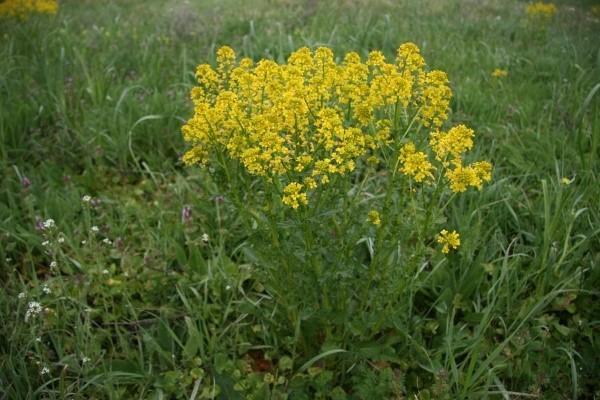Edible herbs in your garden
 Everyone knows what gardeners and gardeners do with weeds - they regularly destroy them, pulling out and weeding the beds. But among them may well be edible herbs that diversify your diet. Some plants, although they look like weeds, taste good and contain many nutrients. They can be added to salads or cocktails, and it will be an environmentally friendly product. Another advantage is that you don't need to go to the store to get herbs. Vitamins grow on your site and will get you completely free.
Everyone knows what gardeners and gardeners do with weeds - they regularly destroy them, pulling out and weeding the beds. But among them may well be edible herbs that diversify your diet. Some plants, although they look like weeds, taste good and contain many nutrients. They can be added to salads or cocktails, and it will be an environmentally friendly product. Another advantage is that you don't need to go to the store to get herbs. Vitamins grow on your site and will get you completely free.
Edible herbs: what weeds can you eat
Before you start cleaning garden beds, take a close look to see if there are such plants among them:
- sverbig;
- hogweed;
- nettle;
- dandelions;
- burdock;
- plantain.
Seeing these herbs, do not rush to get rid of them. If you know how to use them correctly, you can provide yourself with vitamins for the whole summer.
You can rinse your hair with tincture of nettle or burdock root. This will strengthen them and give them shine.
Sverbiga
Perennial plant of the cabbage family with an erect, branched stem and elongated leaves. Contains fiber, protein, proteins, essential and fatty oils, flavonoids, glucosinolates. Has healing properties: relieves inflammation, removes worms, strengthens the body.
Sverbiga is also known as wild horseradish or mustard, wild radish, ferocious, jaundice.
In early May, the bushes release juicy petioles - they are the most delicious. Peeling the peel off the peel, you can make a delicious salad. Young leaves along with petioles are useful for cocktails and adding to soup. Sverbyga is also a good spice for fish and meat.
Hogweed
Tall perennial with an unpretentious character. It grows up to 6 m in height, forming a tall, scaly stem, covered with hairs. Older leaves are also large, about 1.5 m in length. It blooms with white or pink umbellate inflorescences.
Leaves can be eaten raw in salads, added to cocktails or borscht. Good hogweed and salted or pickled. And herbal infusions treat diseases of the skin, nervous system, liver and gallbladder.
Some types of hogweed are dangerous and poisonous. Among them are hogweed Mantegazzi and Sosnovsky, as well as wild. However, even safe varieties contain toxic sap, especially during the flowering period. It causes burns or an allergic reaction.
Nettle
Herbaceous perennial with characteristic stinging hairs on the leaves. Serves as an excellent analgesic, antiseptic, anticonvulsant. Stops and cleanses the blood, removes bile, tones up.
You can make juice, cocktail from nettle. Young shoots are added to soup or pie as a filling, old leaves are fermented, salted, pickled. They can also be dried and added as a seasoning.
Dandelion
A persistent perennial weed that is difficult to remove on the site, but has great healing power. It soothes, weakens, lowers fever, purifies the blood, prevents sclerosis, strengthens bones.
Dandelion flowers make an original and tasty jam, and in their raw form they are added to a salad. The leaves can also be used for cocktails and salads, or pickled.
Dandelion is used to make wine, and its roots are used to make coffee.
Burdock
A medicinal perennial plant with large soft leaves and a long stem. It contains the most useful substances.Burdock root tinctures heal wounds, kill fungus and help fight tumors. They treat diseases of the joints and bones, gastrointestinal tract, ARVI. Fresh leaves are good compresses for skin conditions.
Young foliage is added to cocktails, and the roots of a one-year-old plant are fried or boiled, and even jam is made from them. Juicy petioles are pickled, and stuffed cabbage is made from the leaves.
Plantain
Another edible herb in the form of low bushes with a rosette of wide rounded leaves. Plantain is known for its wound healing and pain relieving properties. The leaves of the plant are added to salads, cabbage soup, casseroles and preservation.